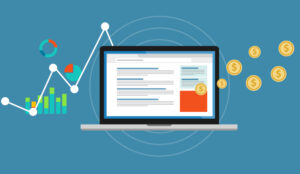Contact centres have always measured key customer service metrics. However, given the rising importance of customer experience, the metrics used must evolve and change.
This enables customer service leaders to demonstrate the value of their work, linking the contact centre to the wider organisation and its objectives.
Essentially, customer service metrics are split into two main categories – operational KPIs and metrics related to the customer’s experience and satisfaction.
1. Operational Metrics
Operational KPIs measure the performance and efficiency of your agents, teams, and the overall contact centre. They range from basic to more complex metrics and include:
Number of Interactions Handled
This tracks how many calls/emails/chats your contact centre answers on a daily/weekly/monthly or annual basis. This is useful to plan resources, especially around events such as Christmas, and to spot spikes in demand.
For example, if you suddenly get a major unexpected increase in calls you need to understand what has caused this.
Contact centres should also measure the total number of incoming interactions. For instance, you can actively track the number of unanswered interactions, such as calls.
Interaction Backlog
This monitors how many interactions are waiting for a response or how many calls are in the queue. This provides real-time information to help resource allocation against demand.
Interactions Handled per Shift/Time per Call or Interaction
This metric measures the number of interactions handled by agents, and how long each takes. Previously the aim was to maximise efficiency by increasing the number of interactions that agents handled per shift.
However, with self-service dealing with simpler interactions, the average interaction length is rising overall. Therefore, take care when analysing this metric to avoid penalising agents for dealing with longer, more complex queries.
Average Handling Time (AHT)
Rather than simply measuring how long each interaction takes, AHT covers the entire customer query, so may include multiple calls or emails.
This provides a deeper, more customer-focused metric. Again, as queries become more complex AHT may increase due to simpler interactions being dealt with by self-service.
First Contact Resolution (FCR)
FCR highlights the percentage of interactions successfully answered with a single call/email or chat session. Getting their problem solved first time is key to customer satisfaction.
In research by ContactBabel FCR was the most important factor for UK consumers when contacting an organisation.
However, solving customer queries on the first attempt will not always be possible. For example, agents may require information from another team or department. It is therefore important not to penalise agents or teams if FCR rates drop for reasons outside their control.
Number of Interactions per Case
Linked to FCR, this metric measures how many interactions are involved in solving a customer query. Analysing queries with a high number of interactions helps streamline processes within the customer journey.
Self-Service Usage
This covers how many interactions self-service systems handle, and the percentage escalated to an agent. It measures self-service efficiency and provides insight into areas for improvement.
Total Resolution Rate
This tracks successfully resolved interactions. Organisations need to put in place clear, agreed processes around what constitutes success to ensure that this metric is meaningful.
2. Customer Experience Metrics
Unlike efficiency metrics, these KPIs focus much more on how the customer feels about the interaction. They provide insight into how satisfied customers are and how it affects future behaviour around loyalty and potential churn. Metrics include:
Net Promoter Score (NPS)
Using a simple scale of 0 to 10, NPS measures the likelihood of customers recommending a company or product to a friend.
By subtracting detractors (those who wouldn’t make a recommendation) from promoters, it provides a score.
However, it is important to understand that it measures future/potential actions, rather than current satisfaction. It also doesn’t explain why people feel the way they do about your company.
Customer Satisfaction (CSAT)
CSAT is based on questioning customers about how happy they are with the service they’ve received. By subtracting negative scores from positive responses, the company ends up with a metric showing overall CSAT.
Results focus solely on the interaction the customer has just had. This means that while CSAT measures satisfaction with the customer service experience, it doesn’t predict its impact on loyalty.
Customer Effort Score (CES)
Making life easier for customers is a key aim for customer service teams. By asking questions such as “How easy was it to resolve your issue?” CES highlights how well the customer service department deals with problems.
While this helps monitor contact centre performance (and provides opportunities for improvement), it doesn’t link it to the wider business.
Value Enhancement Score (VES)
This is a relatively new metric formulated by Gartner. VES focuses on the value customers place on the product or service they’ve bought by looking at two areas.
It covers the customer’s ability to use the product or service, and their confidence that they made the right decision to buy it. Gartner’s research demonstrates a link between high VES scores and customer loyalty and additional spend.
Business Metrics
Customer service can be linked to common business metrics, such as retention, upsell/cross-sell and churn. This is straightforward on paper.
You can measure the percentage of customers that leave after they have interacted with customer service for example. However, this doesn’t measure their actual satisfaction with their interaction.
For example, they could have been calling to return a product as it was defective – hardly the fault of customer service. You must therefore conduct further analysis to link business metrics to customer service performance.
Voice of the Customer (VoC)
While not a specific metric, VoC provides deep insight into customer satisfaction. It enables organisations to dig into the reasons customers are satisfied/unsatisfied with their experience.
This is especially possible if VoC programmes analyse customer interactions (such as emails and voice conversations) and mine these for themes and topics.
As this post shows, there are a wide range of metrics available to customer service and CX leaders. However, no one metric provides the complete picture of contact centre efficiency and customer satisfaction.
Teams, therefore, need to measure a wide range of metrics, understand their particular limitations, and use them to create a balanced view of both satisfaction and performance.
This blog post has been re-published by kind permission of Enghouse Interactive – View the Original Article
For more information about Enghouse Interactive - visit the Enghouse Interactive Website
Call Centre Helper is not responsible for the content of these guest blog posts. The opinions expressed in this article are those of the author, and do not necessarily reflect those of Call Centre Helper.
Author: Enghouse Interactive
Published On: 1st Aug 2023 - Last modified: 9th Dec 2024
Read more about - Guest Blogs, Enghouse Interactive






 Enghouse Interactive delivers technology and expertise to help bring your customers closer to your business through its wide range of customer contact solutions.
Enghouse Interactive delivers technology and expertise to help bring your customers closer to your business through its wide range of customer contact solutions. 








